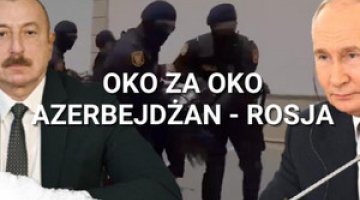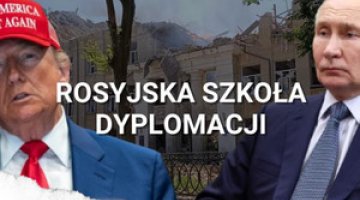Amendment to the Russian budget for 2015: an attempt to maintain the status quo
On 16 March the government submitted a budget revision for 2015 to the State Duma, based on a new macroeconomic forecast prepared by the Ministry of Economic Development which takes into account the changing domestic and international conditions (the decline in crude oil prices, the devaluation of the rouble, the sanctions by the West and the Russian counter-sanctions) that have brought the Russian economy to the brink of crisis. The spending cuts and budget transfers proposed are not focused on the development and modernisation of the Russian economy, but rather on maintaining the status quo in which defence spending, internal security and social expenditure predominate. The Kremlin has moved away from undertaking structural changes and unpopular social reforms (such as pension reform), in fear of a rise in social discontent. However, the adjustment to the budget and the anti-crisis measures proposed by the government (especially those concerning the banking sector) may prove to be inadequate, and further budgetary adjustments may have to be made, especially if GDP declines further than expected.
Amendment to the federal budget for 2015
The amendment to the 2015 budget is based on the assumption by the Ministry of Economic Development of a 3% decline in GDP, on the basis of an oil price of $50 per barrel, inflation running at 12.2% and an average exchange rate for the rouble of 61.5 to the US dollar. It is expected that in 2015 investments will decline by almost 14%, imports by 40% and real wages by more than 6%. These unfavourable macroeconomic indicators will negatively affect the budget’s income, which will fall by 16.8% compared to the budget approved last November. The most serious decrease will be in revenues from the oil and gas sector, which contribute up to 50% of the total income; these will be affected by the low oil prices which have persisted for several months. The economic slowdown will also reduce the revenues from other sectors of the economy.
In connection with the lower income, budgetary expenditure has also had to be adjusted. Although the government had previously announced drastic cuts in all spending by at least 10%, in a number of positions the adjustments made were only limited, and often opaque in nature; and because additional funds had to be allocated for the anti-crisis plan at the same time, this permitted a reduction of only 2%. The budget deficit of 3.7% of GDP (compared to the previously planned figure of 0.6%) will be covered by the funds accumulated in the Reserve Fund (US$77 billion as of 1 March). The adoption of the budget amendment in the Duma has been scheduled for 10 April.
The government’s short-term anti-crisis plan
The adjustment to the 2015 budget was necessary not only because of the serious deterioration in the country’s economic situation, but also because of the need to allocate substantial funds to neutralise the effects of the crisis.
Although oil prices have continued to drop since last autumn (the Ministry of Finance estimated the resulting losses at $100 billion per year), and more than seven months have passed since the introduction of Western sanctions (economic losses have been estimated at $40 billion per year by the Ministry of Finance) and the Russian counter-sanctions, the government has been focused on geopolitical problem-solving, and has not yet prepared a comprehensive strategy to combat the crisis, which has been deepened by the economic problems, especially those in the Russian banking sector. It is true that on 21 January, the Prime Minister signed a decree on the so-called ‘front-line’ projects for 2015 aimed at stabilising the Russian economy (the word ‘crisis’ does not appear in the document) with an amount of $37 billion to be covered from the federal budget and the National Welfare Fund (which amounts to $75 billion as of 1 March). However, the costs of many of the planned activities have not yet been estimated, due to the lack of approved adjustments to the budget, and also because of the need to change a number of legal acts, a process which will take several more months. Nor has any announcement been made of a long-term programme of anti-crisis measures, of a kind which would clearly define the priorities and trends for revising economic policy. The government’s proposals include supporting the financial sector by recapitalising 27 major banks, to which 67% of the planned funds are to be allotted, and assistance and loan guarantees for 199 strategic companies and businesses (irrespective of how efficient they may be). In addition, there are plans to allocate money from the National Welfare Fund to a number of priority infrastructure investments (including the modernisation of the Trans-Siberian and Baikal-Amur railway routes.
Attempts at a short-term treatment of the symptoms
The amendment to the 2015 budget was submitted late, because of the lack of a coherent strategy from the government to overcome the crisis, as well as disputes over economic policy priorities for 2015 and beyond. The Ministry of Economic Development wishes to allocate as much of the financial resources as possible to stimulate the development of the economy (including money from the reserve funds), while the Central Bank of Russia’s priority is to strengthen the rouble and reduce inflation. The proposed budget revision is not focused on developing and modernising the Russian economy, but rather on maintaining the status quo, with priority being given to the defence and internal security sector (to which it is planned to allocate 40% of spending) and the social sector (30% of spending, including subsidies for the Pension Fund and the indexation of pensions). In contrast, spending on education, health and culture will be cut for yet another year; some of these expenses have been passed on to the increasingly indebted regions. Further savings are to be achieved by the planned suspension of wage increases for public sector workers, which had been a priority of President Putin’s policies, and had been announced in the post-election decrees of 2012. The retention of the current budget structure confirms the government’s determination to continue its aggressive foreign policy, and highlights its concerns that the domestic situation could be destabilised by the worsening economic problems.
The temporary measures to stabilise the Russian economy proposed by the government are largely duplicates of the solutions adopted by then Prime Minister Vladimir Putin’s anti-crisis programme for 2008-2009. Moreover, they confirm the lack of a coherent strategy for overcoming the crisis, and the necessary structural changes and unpopular social reforms (such as pension reform) have been postponed, in fear of a rise in social discontent. The plan is to neutralise the symptoms of the crisis by means of ‘manual control’, specifically by using the money accumulated in the reserve funds, over which President Putin has taken personal control.
Russia’s economic problems are structural in nature, as evidenced by the economic slowdown of the past two years, and cannot be solved by the monetary and credit measures proposed in the anti-crisis plan alone. Without an increase in investment and an improvement in the investment climate, the development of infrastructure, improvements to the efficiency of corporations and government, as well as sound public spending and a reduction in corruption, there can be no return to the path of long-term economic growth.
However, the Kremlin has no plans to change its current policies or its economic model, although their potential has been exhausted; it is hoping that the current difficulties are temporary, and that the oil and gas situation and an easing of the Western sanctions will improve matters.
What next?
The actions proposed will lead to an increase in the state’s hand in and further monopolisation of the Russian economy. The small and medium-sized banks and companies, which are bearing the costs of the crisis, will lose the most financing. It is expected that in 2015 between 20% and 25% of all small and medium-sized banks will collapse, mostly regional banks. Many small and medium-sized companies that cannot count on the generous support of the state, or do not meet the conditions to be eligible for such assistance, will also collapse.
If GDP falls by another 3.5 or 4 percent, as the Central Bank of Russia suggested in its most recent forecast, the proposed measures for stabilising the economic situation in Russia, especially its banking sector, may not be sufficient, and another budget adjustment will then be necessary. It may become necessary to draw on the country’s financial reserves even more deeply than planned (these are shrinking rapidly, having decreased by 30% since the beginning of 2014), or to search for additional sources for financing the deficit (such as bonds or loans).





